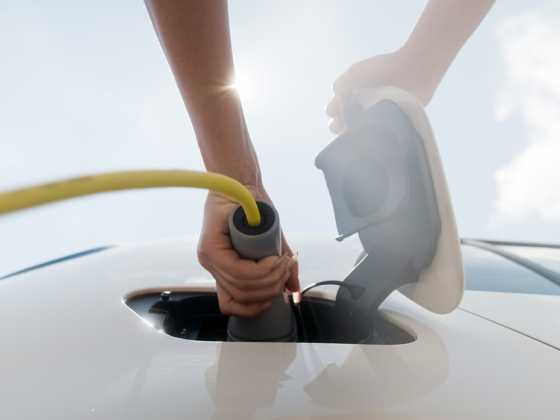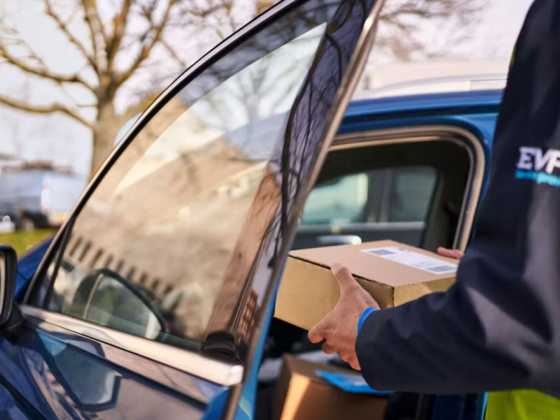Hyundai busts myths about electric vehicles
Hyundai, makers of the Kona Electric, has outlined a number of misconceptions about electric vehicles.
Myth: EVs have a short range. Fact: As EV battery technology progresses, the distance an EV can drive on a single charge is constantly improving. The newest generation of the 64 kWh battery model of the Kona Electric can drive up to 278 miles on a single charge. This makes it a versatile option for a variety of driving patterns: not just short city trips and daily commutes, but also for longer journeys and distance travel.
Myth: EVs are too expensive. Fact: While EVs do cost more on average than internal-combustion cars at the time of initial purchase, the price gap between them is decreasing. Many European countries offer tax deductions and government subsidies to offset the cost of an EV purchase.
It is also important to consider the total cost of ownership (TCO) when purchasing an EV. Several studies have shown that the TCO for EVs is comparable or even slightly lower than that of petrol vehicles, not just because in some places in the world, electricity is cheaper than petrol, but also because EV owners spend less money on maintenance and repairs.
Another metric to look at is residual value. EVs tend to retain a higher percentage of their original value on the used car market compared to petrol cars. With a five-year unlimited warranty on all of its vehicles and an 8 year / 100,000 mile warranty on the high voltage batteries, Hyundai’s electric vehicles tend to rank particularly well on this aspect.
Among the five largest European markets, Kona Electric is predicted to have one of the leading residual values compared to key EV competitors on the market, maintaining on average 54% of its original value according to data published by the independent RV guidebook CAP*. Recent upgrades introducing improved connectivity and charging technology, have been estimated to enhance residual value even further.
Myth: There are not enough places to charge an EV. Fact: There were approximately 165,000 public EV charging stations registered in Europe in 2019, including more than 17,000 high-powered fast charging stations and that number continues to grow. An increasing number of workplaces, supermarkets and public parking spaces now offer free EV charging stations. Customers who prefer to charge their EV at home can use a standard electrical outlet with the cable delivered with the vehicle (including an In-Cable Control Box) for overnight charging, or install a wall box for faster charging.
Kona Electric features a 10.5-kW three-phase on-board charger, which is compatible with public one-phase or three-phase AC charging stations or with a private compatible wall box at home. This allows for significantly shorter charging times: 100 percent in 4 hours, 50 minutes for the 39 kWh version, or 7 hours 30 minutes for the 64 kWh version.
Myth: It is dangerous to charge an electric vehicle in the rain. Fact: EVs and their chargers are built to withstand all weather conditions and are equipped with modern technology to make them just as safe as petrol cars, if not safer. Drivers will have no problem charging their EV when it rains.
For even greater peace of mind while driving, Kona Electric is equipped with the latest active safety and driving assistance technologies, known as Hyundai SmartSense technology. This includes Autonomous Emergency Braking with Pedestrian Detection, Blind Spot Detection, Rear Cross Traffic Alert, Lane Keep Assist, Intelligent Speed Limit Warning, High Beam Assist, Smart Cruise Control with Stop and Go and Lane Follow Assist.
Myth: There is no EV on the market to fit my needs. Fact: The selection of EVs available on the market has widened drastically in recent years. From compact city cars to SUVs, the EVs today are able to meet a wide variety of lifestyles and demands.
Kona Electric was the first subcompact e-SUV to hit the European market. It is specifically tailored to support an active lifestyle.
Myth: EVs are not fun to drive. Fact: Compared to petrol cars, EVs are quieter to drive and offer a smoother ride. Many EVs feature superior acceleration compared to their internal-combustion counterparts, and they even have improved driving dynamics due to the low placement of the heavy battery.
With 204 PS, a maximum torque of 395 Nm, and a maximum speed of 104mph, Kona Electric is a powerful SUV. It can accelerate from 0-62mph in just 7.9 seconds. In addition, a shift-by-wire operation module enables intuitive operation of the electric powertrain by simply pressing buttons to switch driving modes. The adjustable regenerative braking system allows the driver to adjust the intensity of the regenerative braking by using the paddle shifts behind the steering wheel. The system recuperates additional energy when possible. Keeping the left pedal held, the driver can even bring the vehicle to a full stop – without using the brakes. In combination with the radar sensor, the smart regenerative braking system will even automatically control the regenerative braking in accordance to the traffic ahead.
Myth: EVs do not look good. Fact: Kona Electric was designed to stand out on the street. It offers sleek, sculpted lines, powerful LED lights and aerodynamically optimised 17-inch alloy wheels. The front of the car features a unique closed grille for a modern and clean appearance. Meanwhile, customers can choose from 6 different exterior colour combinations for an individual style.



